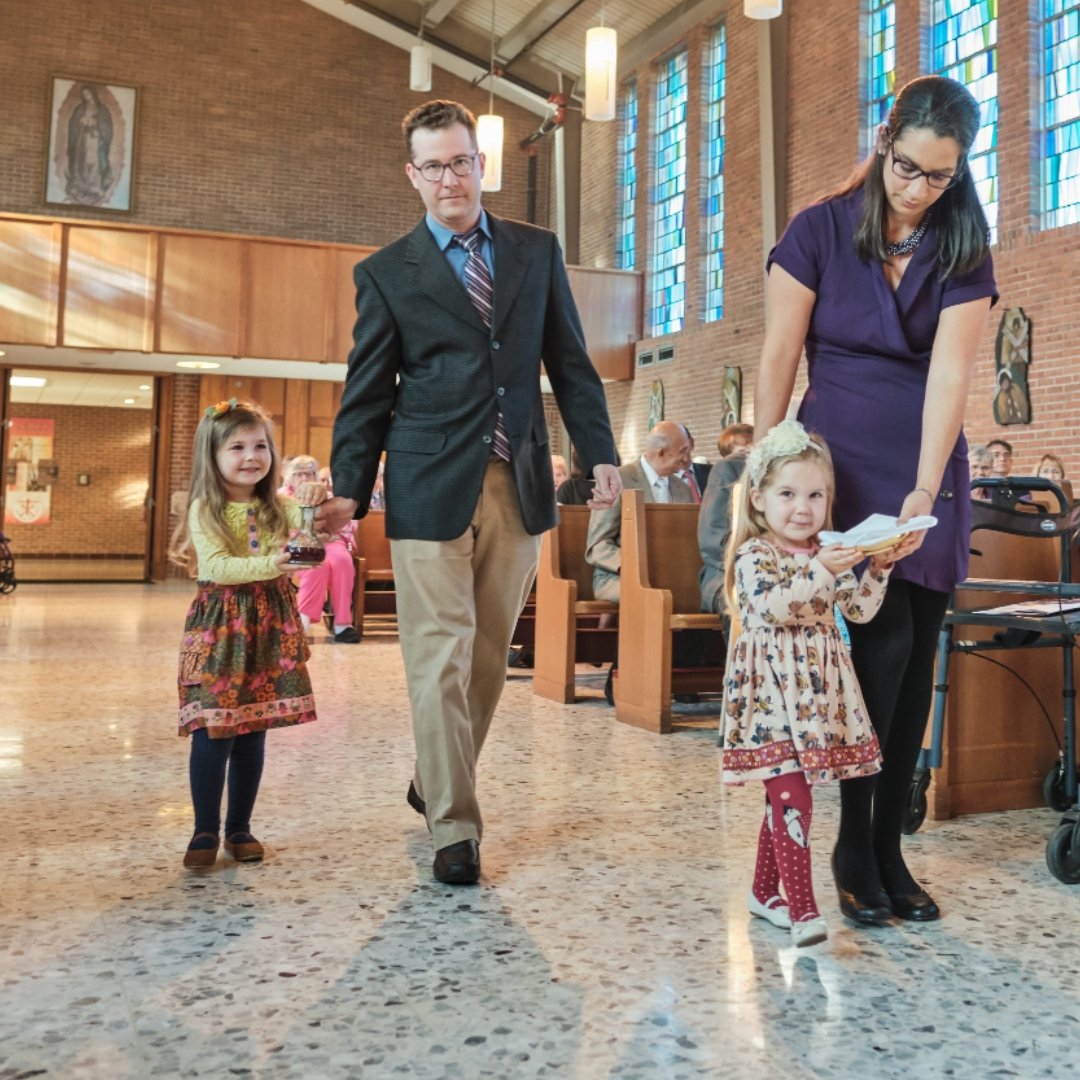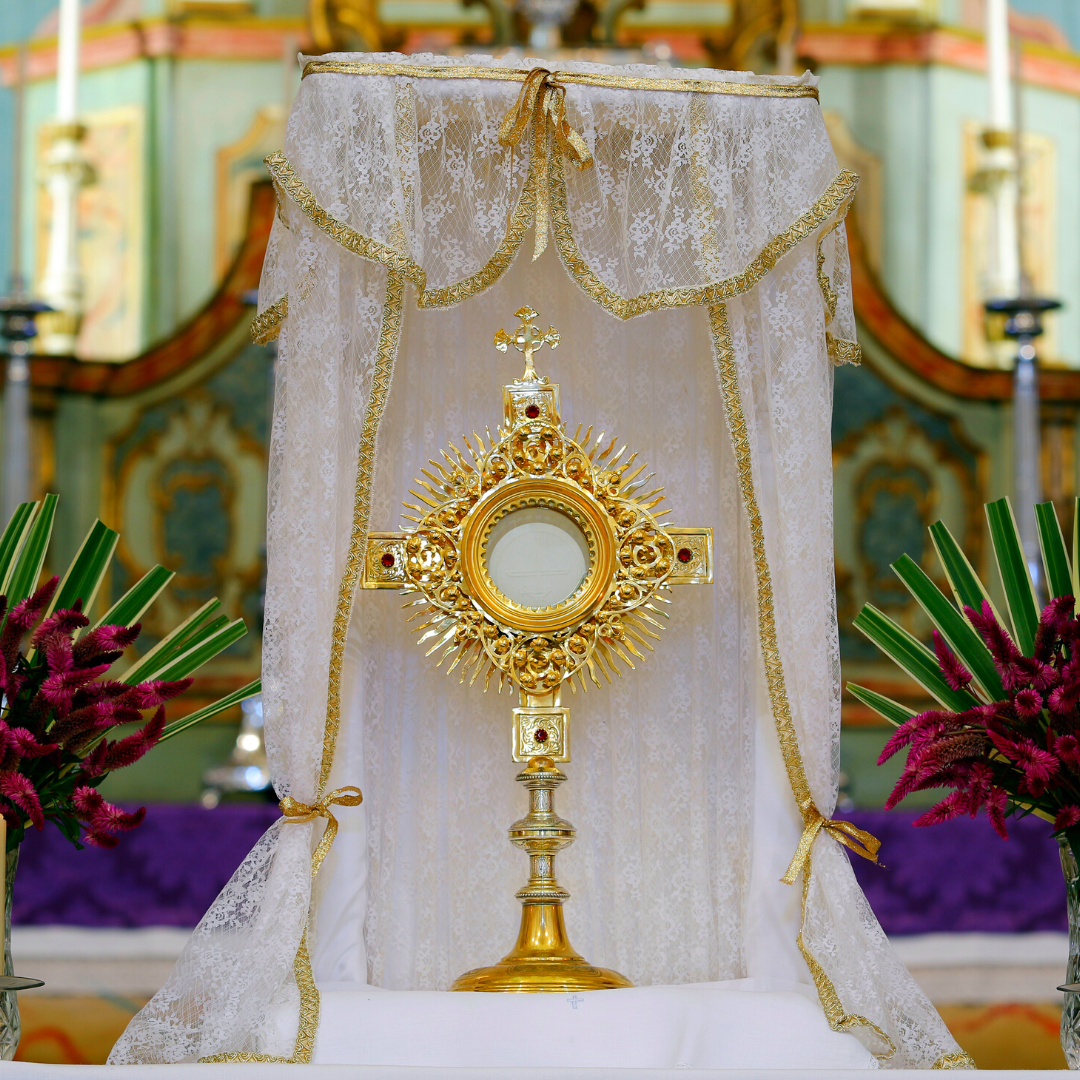
AnneMarie Miller ponders ways that we can step past Sunday-school textbooks and immerse our children in a lived experience of the Eucharist and Liturgy.
In the years that I attended and taught religious education classes, there was a common vehicle that was often used to bring children to God: worksheets, textbooks, coloring pages, and games (which relied on memorizing words and facts). I’d occasionally spice up lessons with stories or creative activities, but quite often, I saw the teacher as the person appointed to cram knowledge into the students. That way, the students would know God and learn about the Catholic Faith.
However, I’ve slowly begun to realize that children have a deep and rich capacity for prayer. They naturally long for God; yet sometimes, in our classes, we focus on teaching facts instead of nurturing a prayerful, lived relationship with God.
Particularly with the National Eucharistic Revival underway, we may hear references to the Eucharist as being the “source and summit” of our life as Catholic Christians (Catechism of the Catholic Church 1324). Liturgy is the prayer of the Church, and it’s the most important thing we do. Pope Emeritus Benedict XVI discusses the liturgy in his exhortation Sacramentum Caritatis, noting:
The primary way to foster the participation of the People of God in the sacred rite is the proper celebration of the rite itself. (38)
Pope Benedict’s words strike me in a new way. If we grow in active participation and prayer by attending beautiful liturgies, then could our religious education programs better reflect this reality?
While we can—and should—address numerous topics within our religious education programs, I wonder if we can take a more liturgical, Eucharistic approach. While there are many ways we can bring children to God, I’d like to offer some ideas and questions for deeper reflection:
Bring the children to Mass
It’s a common—and sad—reality that in some communities, a significant number of children who attend religious education classes do not attend Mass. Some parishes hold classes immediately following Mass, perhaps to encourage families to attend Mass before coming to class. Yet, some parents still skip Mass and simply drop their kids off for class. Could we consider ways to counter this all-too-common occurrence? Could a catechist and his or her class attend Mass together? Could a priest even celebrate Mass during the time allotted for religious education classes?

Offer opportunities for Eucharistic Adoration
It’s one thing to use textbooks and worksheets to teach children about the Eucharist, and it’s another thing to actually take them to spend time with Jesus in Adoration. Some children may not regularly attend Adoration or pray at home, so creating a time and space for this practice is a huge gift. Whether it’s a monthly occurrence or only a few times a year, how can we incorporate periods of Eucharistic Adoration in our religious education programs?
Read and discuss the prayers and gestures of the liturgy together
In an attempt to help one of my children focus better at Mass, I recently decided to bring a Missal to Sunday Mass. I noticed that my child was much more engaged and responsive during the liturgy because he now knew what the responses were. It hadn’t realized that my child had not yet learned these! Could the children in our religious education classrooms also benefit from an exploration of the Mass? Could we unpack the rich significance of the prayers, postures, and gestures together?
Delve into a Liturgy of a different rite
When I was in middle school, my religion teacher once arranged for a biritual priest to come and celebrate a Byzantine Catholic liturgy for our class. Knowing that many of us had never attended Mass in that rite before, he would pause occasionally and discuss elements of the Liturgy that looked slightly different from what we were used to. It was very eye-opening and beautiful. Could the children in our religious education classes also benefit from experiencing the different rites within the Church?
Prayerfully make a Spiritual Communion
We can also introduce the children to the practice of offering prayers that express our desire to be united with Christ. We can present a variety of spiritual communion prayers for the children to use if they wish. We could also encourage the children to write their own prayers! Could a discussion on this help the children grow in their longing for Christ and their reverence of the Eucharist?
As I reflect on the place of the liturgy in our lives, I continue to wonder how we can bring the richness of the Eucharistic Liturgy into our religious education programs. Rather than poring over textbooks, could we step past the worksheets and coloring pages to help our parish’s children experience the great gift of the Eucharist? What are other ways that we can do this?

Copyright 2022 AnneMarie Miller
Images: Canva; family at Mass photo copyright 2019 Holy Cross Family Ministries, all rights reserved.
About the Author

AnneMarie Miller
A bibliophile, wife, mother of young children, and lover of the Liturgy, AnneMarie Miller enjoys exploring the manifold—and quirky—ways in which God speaks. She can often be found reading books to her kids, burrowing her toes in the red Oklahoma dirt, or sipping black coffee. Her reflections on Catholicism, literature, and hope can be found on her blog, Sacrifice of Love.


.png?width=1806&height=731&name=CatholicMom_hcfm_logo1_pos_871c_2728c%20(002).png)
Comments